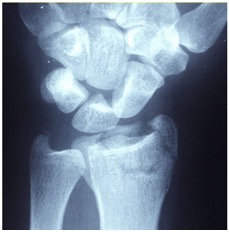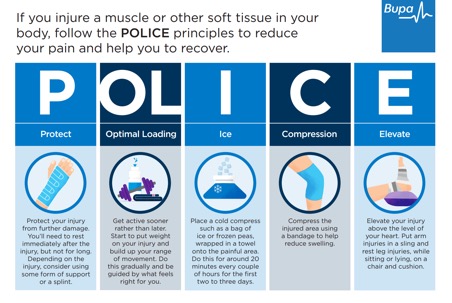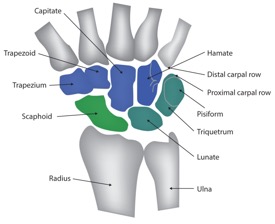


The Spike That Changed Everything!
During what should’ve been a routine practice a year ago, I leaped for a spike - same move that I’d drilled for a thousand times. But the moment my palm struck the ball, a sharp, searing pain shot through my wrist. I shrugged it off as a minor tweak: threw on some tape, iced it, and kept grinding. That was a mistake.
What started as a manageable injury spiralled quickly into a near career-ending ordeal. It was a wake-up call that changed how I view my body, my training, and the science behind injury prevention.
This experience led me down a rabbit hole of sports medicine, biomechanics, and rehabilitation. I quickly realized: professional athletes don't just push harder - they train smarter. Especially when it comes to protecting the small but mighty wrist, especially when it comes to the wrist: a small joint, but one that takes a beating in every set, swing, and serve.
Wrist: Why It is So Fragile and Crucial
The wrist, one of the most intricate joints of the human body, consists of eight carpal bones, linked by a dense web of ligaments and connected to the radius, ulna (forearm bones), and metacarpals (the five hand bones).
Figure 1. Anatomy of the Human Wrist
Source: Anatomy, Shoulder and Upper Limb, Wrist Joint (Ervin et al. 2023).
This complexity gives us incredible flexibility and control - think everything from setting a ball to gripping a pen - but it also makes the joint prone to instability. A review published in Journal of Orthopaedic Surgery and Research suggests that nearly one-quarter of all sports-related injuries involve the wrist or hand, while repetitive wrist flexion and axial impact - common in volleyball - can greatly increase the risk of tendinopathy and other wrist pathologies (Avery et al. 2016).
Figure 2: Ways to treat Wrist Tendonitis
Source: Physio-pedia. https://www.physio-pedia.com/Hand_and_Wrist_Sports_Injuries
As volleyball players, specifically, our wrists endure extreme stress in:
● Spiking: the sudden deceleration and force transfer can exert up to 3-5 times your body weight on the wrist.
● Blocking: Unexpected impact against hard-driven balls could cause both torsional and compressive stress.
● Diving and Receiving: Sudden ground contact can easily cause sprains or fractures.
So… How to Do It Like a Pro?
Preventing injury isn’t just about taping up and hoping for the best: it’s about following a carefully designed, science-backed protocol. Here's how professionals train, recover, and monitor their wrists to stay game-ready:
Sustainable Training Protocols for Injury Prevention: Injury Prevention should start long before you feel any pain. Professional players have sustainable systems that build up not only strength, but mobility, coordination, and tolerance.
● Dynamic Warm-up: A warm up isn’t just about breaking a sweat: it should also activate your neuromuscular system. A 10 to 15 minute dynamic sequence that includes wrist circles, forearm stretching, and light resistance band exercises prepares your joints for load-bearing activities. However, more prolonged, static stretching should be avoided prior to a high level or competitive athletic or training performance (Behm et al. 2011).
● Functional Strength Training: After sufficient warm-up, forearm eccentric loading (e.g. wrist extensor curls), grip strength drills, and push-ups can help build long-term resilience.
● Technique Optimization: Small tweaks in spiking form, landing positions, or footworks can significantly reduce injury risk.
Emergency Protocols after Injury: If injury does strike, immediate response is crucial. Modern sports medicine favors the POLICE method:
● Research suggests that POLICE is a significant improvement from the traditional PRICE method (protect - rest - ice - compression - elevate) as it emphasizes on the balance of rest and optimal loading (Bleakly et al. 2012).
● This approach also helps minimize scar tissue formation and preserve proprioception, which are critical for full recovery.
Figure 3. The POLICE Method of Injury Response.
Source: Bupa. https://www.bupa.co.uk/~/media/images/police
Injury Assessment Standards. Evaluations typically include:
● Differential diagnosis of acute vs. chronic strain.
● Joint-specific evaluations.
● Functional Movement Screening (FMS).
Recovery Protocols: Healing is not a passive process. Recovery, when done right, should be active, structured, and supported by science.
● Regeneration protocols are often used to accelerate tissue repair and reduce post-training inflammation. One can use Contrast Therapy (alternating between 1min cold + 1min heat for 5 cycles to stimulate blood circulation) or Myofascial Release (using a foam-roller on both sides of the forearm, 2min each).
● Nutrition: What you eat is also crucial to how you heal. Several helpful nutrients for recovery: Vitamin C, Collagen Peptides, Curcumin, Omega-3 fatty acids.
● Enough sleep: at least 7 hours per night.
Long-time Monitoring and Gear Selection: Braces and supports should be individualized and match your playstyle and injury history, not not one-size-fits-all. Always consult a sports physician/PT first before you gear up. Players should undergo regular check-ins to catch the small problems.
Final Thoughts: Prevention > Rehabilitation
The best way to deal with wrist injuries is not to have them in the first place. Treat your wrists like the elite athletes do: with structure, intention, and respect for your body’s complexity. Whether you are chasing your Olympic dreams or just want to stay pain-free, smart wrist care is non-negotiable!
Sources Cited:
Avery, D. M., Rodner, C. M., & Edgar, C. M. (2016). Sports-related wrist and hand injuries: a review. Journal of Orthopaedic Surgery and Research, 11(1). https://doi.org/10.1186/s13018-016-0432-8
Behm, D. G., & Chaouachi, A. (2011). A Review of the Acute Effects of Static and Dynamic Stretching on Performance. European Journal of Applied Physiology, 111(11), 2633–2651. https://doi.org/10.1007/s00421-011-1879-2
Bleakley, C. M., Glasgow, P., & MacAuley, D. C. (2012). PRICE needs updating, should we call the POLICE? British Journal of Sports Medicine, 46(4), 220–221. https://doi.org/10.1136/bjsports-2011-090297
Erwin, J., & Varacallo, M. (2023, September 4). Anatomy, Shoulder and Upper Limb, Wrist Joint. PubMed; StatPearls Publishing. https://www.ncbi.nlm.nih.gov/books/NBK534779/